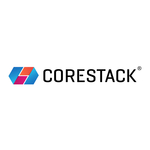US Payments Forum Spring Market Snapshot: AI Use Cases, Contactless Standards and Card-Not-Present Concerns
REDWOOD CITY, Calif., April 23, 2024 (GLOBE NEWSWIRE) — The U.S. Payments Forum is bringing together insights from the world’s leading payment innovators in its spring market snapshot. It offers perspectives on technologies that are shaping the industry, including artificial intelligence, persistent and emerging fraud trends and contactless and card-not-present transactions. The information provided in the snapshot was gathered during the Forum’s Spring Member Meeting in Tucson, Arizona, which followed the Secure Technology Alliance’s Identity & Payments Summit.
Streamlining contactless payments
There’s no question that for many consumers contactless has become the de facto way to pay. While the initial surge in contactless payment implementation was spurred by the pandemic, the market is showing no signs of slowing down four years later. On a panel of global payment networks, Mastercard stated they have observed stable growth of 100% YOY for the last few years. In addition to tap-to-pay technologies in retail settings, it was shared that transit has been a big contactless motivator. There are currently 29 live contactless transit payment systems across the U.S. and 10 more actively pursuing implementation, incentivizing many people in public transit-focused cities to embrace contactless even further.
Contactless standards were also top of mind for many speakers at the meeting. To unify standards for contactless cards from different networks, in 2022 EMVCo introduced EMVÒ Contactless Kernel Specification C-8. The main benefit of aligning the contactless standards for each network into a single kernel is to simplify the implementation for the acceptance community and centralize the testing, removing the need for implementers to test and certify with each payment brand. The adoption of the new kernel requires additional certification and deployments for issuers and acquirers to achieve the long-term objective of faster deployment and cost savings. The testing and acceptance tools required to achieve this new, common kernel are set to be published later this year. Although the global networks in attendance are prepared for this change, they acknowledged that it would require a multiyear journey to complete.
AI remains relevant
While artificial intelligence has long been leveraged in the payments industry, generative AI has renewed interest in the technology. During the Forum meeting, stakeholders expressed that several use cases are on the table, most commonly in fraud mitigation. GenAI can analyze massive quantities of data quickly and efficiently, making it a prime candidate for identifying potentially risky transactions on the back end. Payments stakeholders are also using the tool to improve the documentation process in the case of disputes, simplify loan origination and underwriting, enhance customer experiences and expand recommendations in loyalty programs based on existing customer data.
Though there are many pros, a common concern raised by Forum event attendees is the potential security risks associated with the widespread use of generative AI tools. This has not been explored at length by the Forum; however, many stakeholders agree that standards and compliance measures should be taken into consideration when inputting sensitive company or customer information into these tools, especially if employees are using ‘free’, potentially unsecured versions of ChatGPT, Google Bard, or other applications leveraging Large Language Models (LLMs).
Card-not-present momentum and fraud concerns
E-commerce has grown in recent years, facilitating a rise in card-not-present (CNP) transactions and, by extension, CNP fraud. When weighing the risks, some speakers mentioned that large amounts of data are being collected during the CNP transaction process which highlights a need for improved authentication and Personal Identifiable Information (PII) protection to prevent data breaches. During a joint merchant and issuer special interest group, speakers said that identity and payments professionals must work collaboratively to advance solutions for these problems. The synergy between the U.S. Payments Forum and the Identity and Access Forum within the Secure Technology Alliance is the perfect place to start.
Another CNP topic of interest is tap-on-phone POS technology, often referred to as softPOS. Some speakers said they are testing the payment method in a pilot phase and exploring the benefits to both merchants and users. One obvious benefit is its accessibility to small businesses that may not have the means to implement a large-scale POS system. For example, vendors at a farmers’ market and people offering independent services from a home studio such as makeup artists or hair stylists. Stakeholders are exploring the differences in efficiency and security between more traditional mobile POS (mPOS) systems and softPOS. There was also discussion about use cases outside of payment such as tap-to-enroll, tap-to-authenticate, tap-to-activate and even tap-to-confirm deliveries.
Forum priorities
The U.S. Payments Forum’s primary focus is to provide a platform for solving cross-industry challenges and promoting innovation. This is achieved through collaborative discussion, networking events and educational resources. During the Forum’s member meeting, stakeholders identified key opportunities for improvement and growth within the payments landscape.
Those opportunities are highlighted by the numerous projects the Forum currently has underway that will benefit stakeholders throughout the payments ecosystem, including resources on:
- Connected car and contextual payments
- Phishing-resistant authentication
- Electric vehicle (EV) fleets
- Device identification and authentication
- PAR’s role in payment lifecycles
- Secure remote commerce (SRC)
- Fare programs for expanding transit open payment uses
- Contactless adoption at the ATM
- Role of digital IDs in mobile payments
Resource recap
The U.S. Payments Forum has recently published the following resources:
- Maximize EV Charging Payments: The Power of Using MCC 5552 – An infographic with best practices on the use of the correct Merchant Category Code (MCC) in electric vehicle charging transactions.
- Migrating Fleet Cards to EMV – A resource with guidance on the shift to EMV fleet transactions aimed at making EMV fleet testing more efficient and consistent across all fleet brands.
Organizations, associations, government agencies and individuals interested in participating in upcoming Forum projects can visit the Secure Technology Alliance’s website to learn how to become a member. By joining the Secure Technology Alliance, members will have access to activities within the U.S. Payments Forum, the Identity and Access Forum and additional Alliance working committees.
About the U.S. Payments Forum
The U.S. Payments Forum is a cross-industry body that brings stakeholders together on neutral ground to enable efficient, timely and effective implementation of emerging and existing payment technologies. This is achieved through education, guidance and alternative paths to adoption. The Forum is the only non-profit organization whose membership includes the whole payments ecosystem, ensuring that all stakeholders have the opportunity to coordinate, cooperate on and have a voice in the future of the U.S. payments industry. The organization operates within the Secure Technology Alliance, an association that encompasses all aspects of secure digital technologies.
Contact
Sherlyn Rijos-Altman
Montner Tech PR
203-226-9290




































